France, 1925: What has a mid-engined unit frame chassis, independent four wheel suspension with coil springs, OHV four cylinder engine with conical valve springs, four wheel brakes and an aerodynamic body with roll down windows?
Story by Eric Davison
Read about the Tampa Bay Auto Museum
In the first quarter of the 20th century, the French auto industry was leading the world with innovation. A great deal of that innovation appeared because a few of the better engineering minds of the time were convinced that there was a direct correlation between the automobile and the airplane.
Surely the Farman brothers, Gabriel Voisin and even Ettore Bugatti felt so. The Farman brothers started out with airplanes for which they were pioneers and innovators. Their cars were equally delightful.
Voisin automobiles were highly sought after, leaders in design and were magnificent automobiles. The Laboratorie was a racing car created with aeronautic principles in all phases of its creation; streamlining, controls and light weight. Essentially the Laboratorie was an airplane on four wheels.
The Gerin Aerodyne tops them all
However, the most interesting and least known automotive creation derived from aircraft principles is the Gerin Aerodyne. Jacques Gerin was a mathematician and aeronautical engineer as well as a pilot. He was convinced that some of those attributes that made an airplane fly could be applied to an automobile. Namely, light weight and aerodynamics.
If you are enjoying this article, click here to subscribe to VeloceToday!
Using some of what he had learned while working at Airplanes Voisin, Gerin set out to create a stressed space frame of cast aluminum sandwiched between a wooden framework. The floor was aluminum and for strength, steel was used for front and rear subframes. Fenders were aluminum and the body itself was to be covered in stretched fabric, a standard aircraft practice at the time. The roof was to be heavily waxed paper that was translucent and, obviously of light weight.
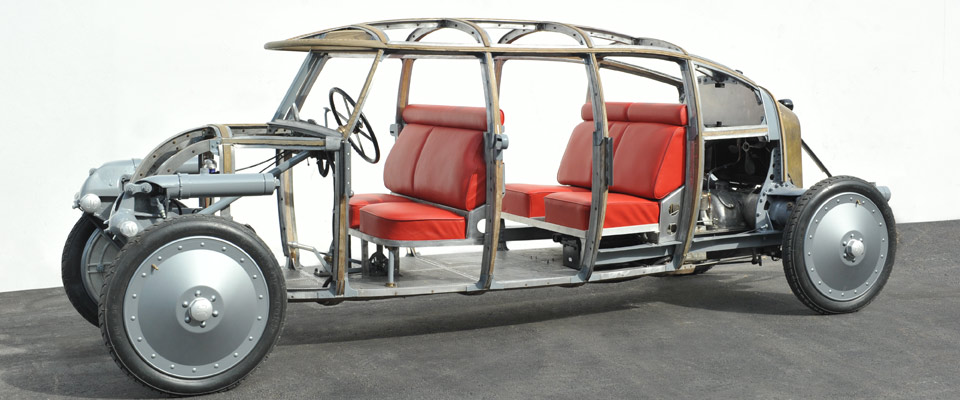
The skeletal Gerin. Note the horizontal cylinders above and behind the front wheel. Those hold a spring/shock combination. The one at the rear is hidden by the wheel.
It takes very little imagination to look at the structure of the Aerodyne and recognize an air frame. Remove the wheels and add wings and voila, an airplane.
The suspension was also a Gerin original design; a lever-action hydraulically operated system. It was unique, original and effective.
The rear drum brakes were mounted inboard to reduce unsprung weight and the hydraulically operated front brakes had four shoes per wheel. Steering was done via a sliding rack designed by Gerin and the steering column rake was manually adjustable.
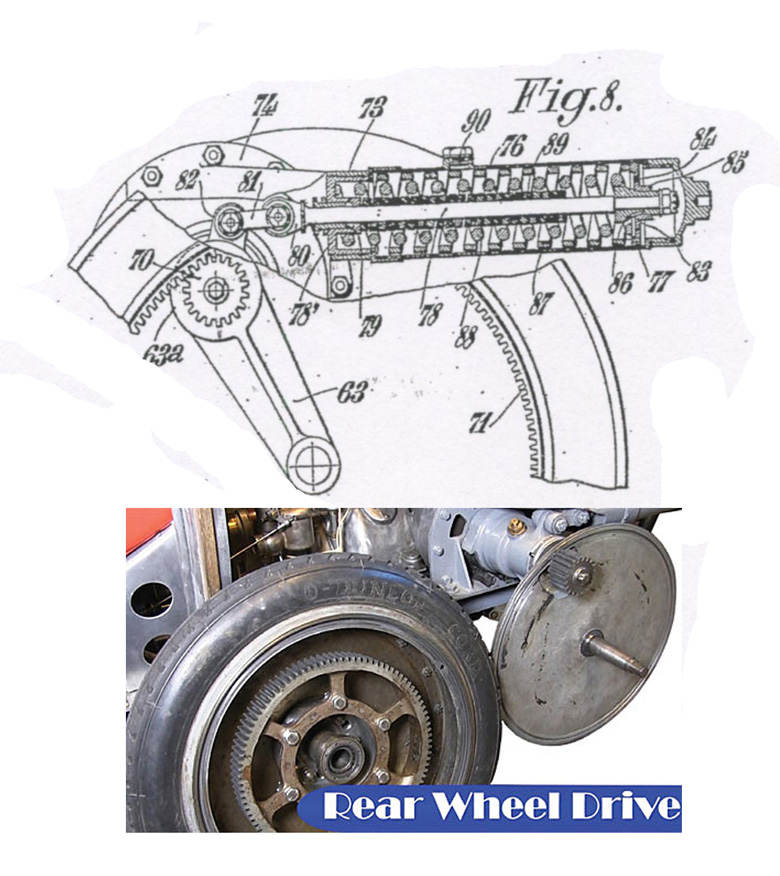
The pinion gear (70) drives the toothed wheel (71). The key to the suspension action is the casting which pivots around the pinion gear drive, and is fixed to the backside of the wheel plate (63) as well as the arm which pushes and pulls on the spring/shock tower (81). Since the casting arcs around the pinion gear, which is fixed, the wheel/gear combination can move in a small arc around the pinion as a planetary gear as the wheel moves up and down.
Power came from a two-liter, four-cylinder engine with overhead valves that featured conical valve springs. This was created by Javier Sabin of Montrouge France. Gerin himself patented a variable friction drive transmission that put the power through numerous gears to a final drive that utilized a planetary gear inside the rim of the rear wheels to transmit power to the road. The rear wheel actually oscillated around the planetary gear as it moved up and down. That it all worked is proven by the Gerin today, which is now in running condition.
According to the plan the entire driveline was to be removable by one man using just two wrenches, an operation that could be accomplished in six minutes.
Mr. Gerin never completed his dream car. He had apparently exhausted his enthusiasm. But, he did accumulate an estimated 5,500 miles on the unfinished prototype trying to find investors and prospective buyers. All to no avail and the trail of the Aerodyne ended in 1925.
However, Gerin continued to work on aircraft designs and in 1936 the Gerin Varivol bi-plane appeared and featured a variable swept wing. While the aircraft was flown in tests in March 1936 it suffered a fatal crash landing in November of that year. Jaques Gerin also designed an airplane with a variable wingspan. It survived and is currently on display in the Air Museum in Angers, France.
M. Gerin’s Aerodyne essentially disappeared for an estimated 90 years when it was uncovered apparently in a collection in the UK after a 15-year search by a person or persons who had heard of the Aerodyne and went hunting.
Curiosity got the better of a connoisseur of the arcane and the Gerin Aerodyne was located through the collector’s family that was trying to liquidate their father’s collection. The Aerodyne was displayed at Retromobile in Paris in 2012 and subsequently made its way to a Paris Bonhams auction at Les Grandes Marques Du Monde Au Grand Palais in Paris on February 5, 2016, then onto the Tampa Bay Auto Museum.
It came complete with copies of Gerin’s patents, engineering drawings, renderings of the fabric-wrapped body and, unfortunately no comments or notes from Gerin. This was an important omission.
The acquisition of the Aerodyne was a natural for the Cerfs and their museum.
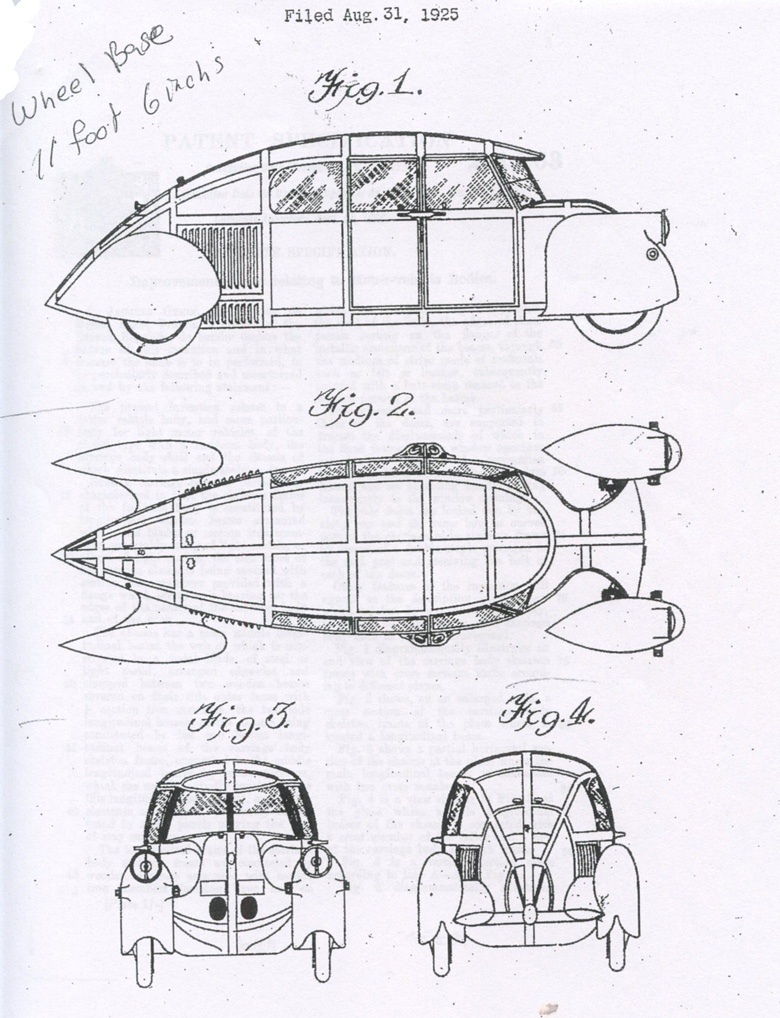
Original patent drawings for the Gerin were very helpful in the restoration. Advanced in every aspect, the Gerin is actually more unique and it bristles with new ideas.
There are few places on earth that would be a more appropriate home for the Gerin Aerodyne than the Tampa Bay Automobile Museum where, under the guidance of Alain Cerf a restoration is taking place. I suspect that M. Cerf is high on the list of those to call when a French car of curious and interesting features becomes available. While M.Cerf is an engineer he is apparently a man who loves both history and a challenge. The Aerodyne is surely both.
While Gerin’s patents include drawings, they have raised serious questions and caused an undue amount of head scratching as the restoration moves slowly ahead. The missing notes from Gerin would have provided answers to questions that may never be answered.
The body as indicated in the patents was to be covered in fabric, a standard in the aircraft industry at the time. There is no indication or evidence that fabric had been used. Aluminum was the cladding. The waxed paper roof was another change from the patents. It too was aluminum.
Mr. Gerin’s patented variable friction transmission had also been abandoned somewhere along the line in favor of a traditional gearbox.
Oh, for those notes that might have explained the changes.
The engine and drive train have been thoroughly checked, rebuilt where necessary and re installed in the car. According to Cerf the car drives extremely well and the performance is better than expected.
The timetable for the completion of the car is Retromobile 2018 in Paris, a date that is dangerously close with so many unknowns and questions left to answer.
Patents and the accompanying drawings have been helpful but, in part, confusing because of the differences between what was applied for in the patents and what actually appeared on the car.
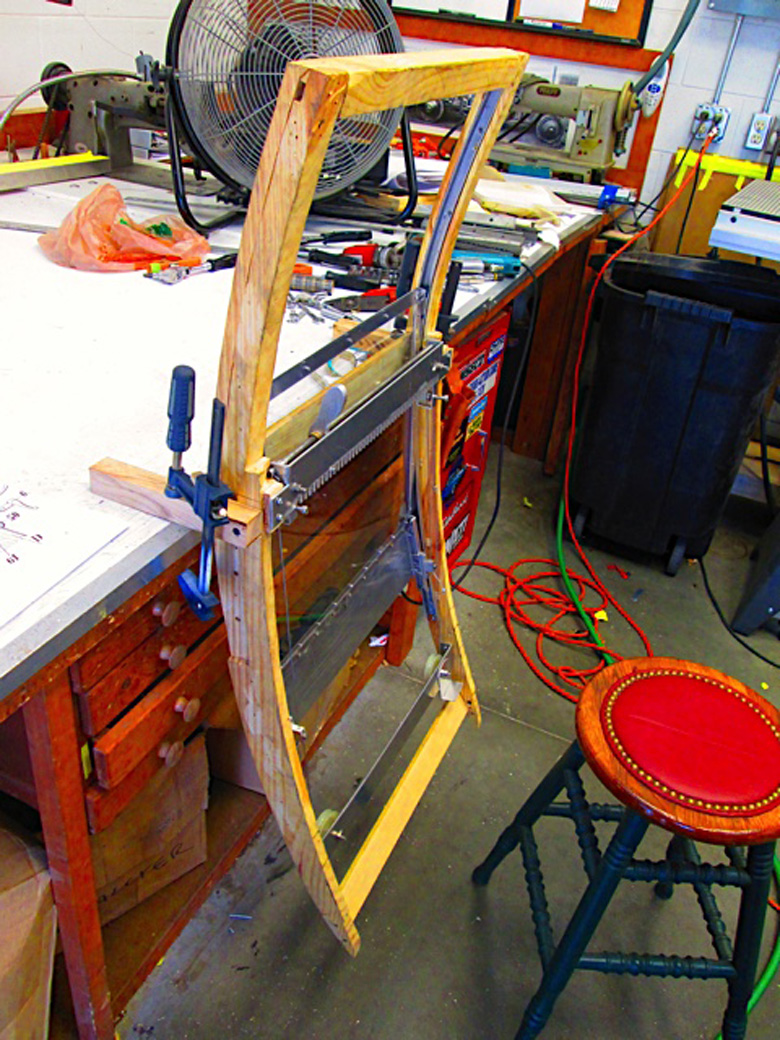
How to put a straight piece of glass in a curved door. The patent drawings were clear but it was still hard to accomplish. Photo by Eric Davison.
Recreating a four-shoe per wheel hydraulic braking system from scratch took patience, engineering and a great machine shop. Fitting a device for raising and lowering window glass into a curved body has been equally challenging even though the drawings are clear.
The car in its skeletal form was displayed at Amelia Island this past April and is on display at the Tampa Bay Automobile Museum as work goes on. While it will be wonderful to see the final restoration, it is equally interesting to see an unusual vehicle arise, essentially from almost nothing. Since the museum is just 40 miles from me I will be able to track progress and to photograph and report on progress as the project moves to completion
Be patient.
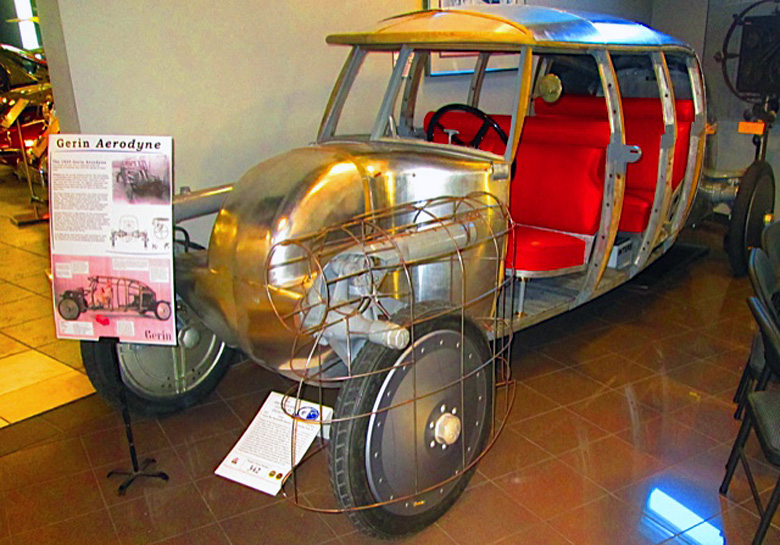
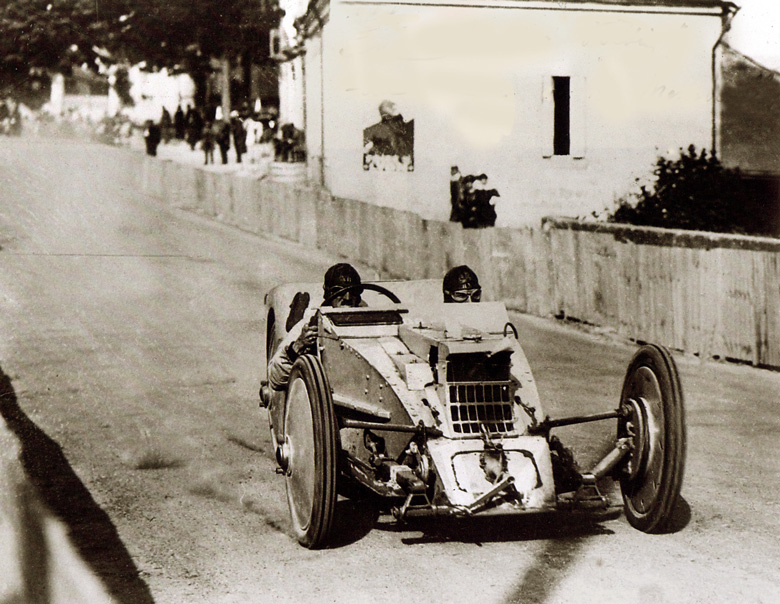
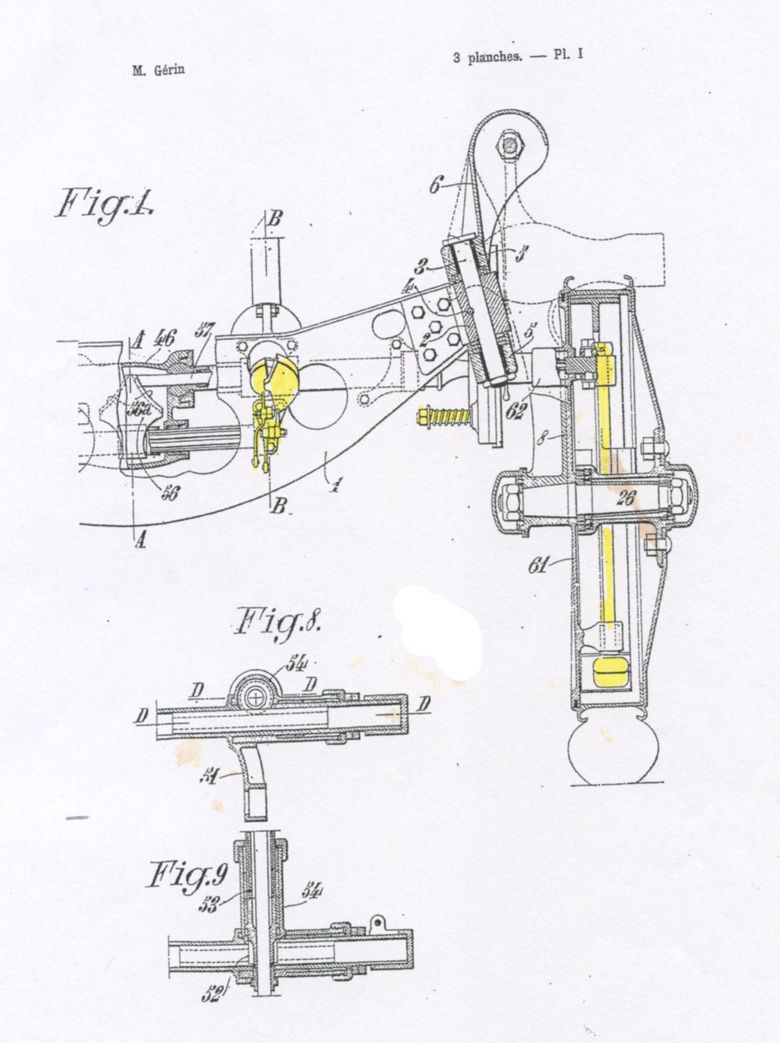
Fascinating , a true labour of love. I just wonder if Andre Citroen perhaps got inspiration for his 2CV’s suspension from Gerin. I look forward to further details.
A fascinating design and concept. It was on display at the Amelia Island Concours in March and I could not take my eyes off it and its novel moving parts. It is a treat to learn more about it.
Fascinating article on another remarkable French car of the 1920s that should have seen a brighter future. Truly unique. But the country’s tumultuous politics of the time – and through 1940 – killed too many entrepreneurial projects. Quel dommage! Bravo, Eric!